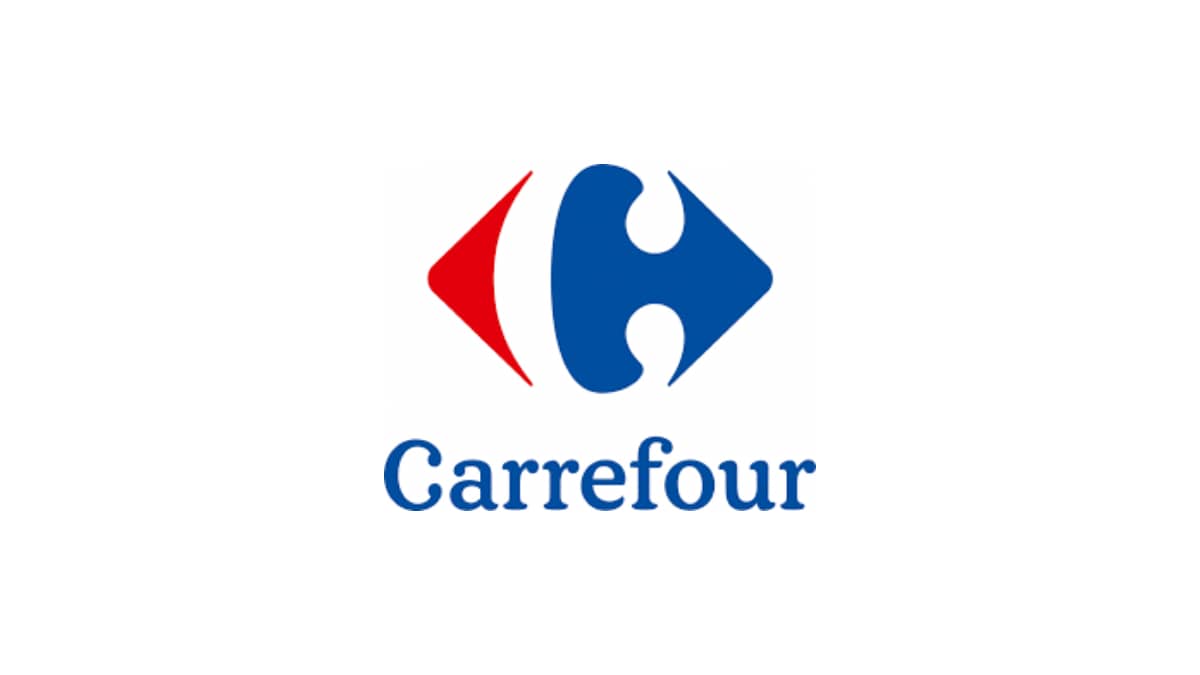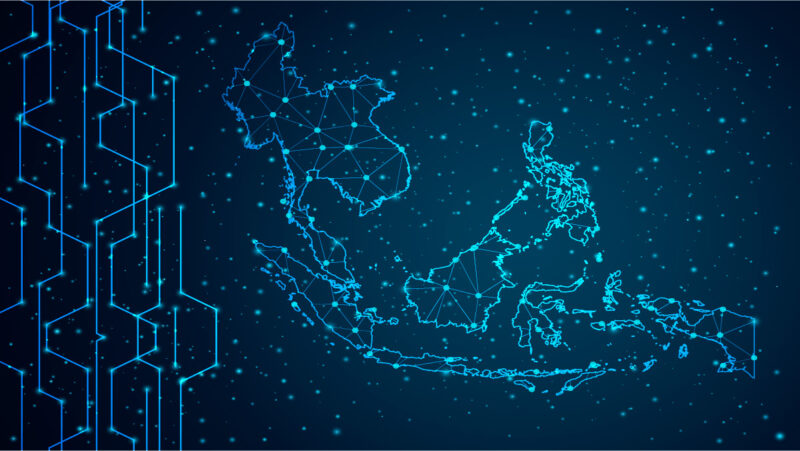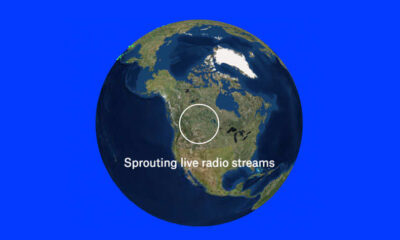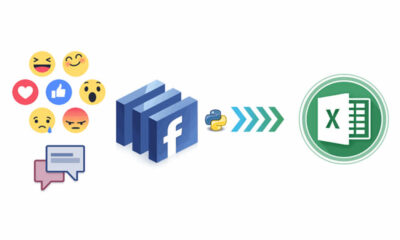Marketing
Carrefour Signs A Partnership with Meta

Carrefour has launched a partnership with Meta; to support the group’s digital transformation, and provide more personalized experiences for customers and 320,000 employees.
The initiative will be rolled out across the group’s nine integrated countries (France, Italy, Spain, Romania, Poland, Belgium, Taiwan, Argentina, and Brazil).
The partnership will span many aspects of Carrefour’s business from internal communication and employee experience through to customer relations, digital advertising and the digitisation of leaflets, local communication and social commerce. It will include multiple Meta platforms and services: Facebook, Instagram, WhatsApp, Messenger and Workplace.
Transforming Carrefour’s Customer Experience
As part of Carrefour’s ambition to deliver the best digital experiences, Meta will integrate Carrefour into its mobile experience development programs. In this way, Meta will help Carrefour build the future of its mobile environment.
To digitalise its customer experience, the Group will also work with Meta to provide instant and more personalised experiences via WhatsApp and Messenger platforms. In addition, Carrefour will empower store managers to access local communication tools to activate Meta platforms in their catchment area to support the acceleration of local digital marketing.
In line with the rise of live shopping and new consumption models, Meta will also support Carrefour in the development of its e-catalogue offering using customised tools and innovative formats. Carrefour and Meta are already working together to digitalise promotion via the WhatsApp Business API.
The digitisation of leaflets meets new consumer expectations, with 70% of French people preferring digital leaflets to paper according to a recent Ipsos study for Meta.
The two companies will also develop a joint campaign targeting and measurement offering within Carrefour Links, Carrefour’s platform that brings together all retail media solutions to improve the effectiveness of advertising campaigns.
Connecting 320,000 Employees With Workplace
Carrefour is also taking an important step in its internal communication strategy by announcing the planned deployment of Workplace, Meta’s business communication tool, to its 320,000 employees.
It is intended that Workplace will be rolled out progressively throughout the company and its integrated countries. The aim is to enable employees to create communities and make use of familiar features from social networks into their daily work lives to better communicate with each other regardless of their position in the Group, their business unit or the country where they are based.
By eliminating silos and connecting everyone, Workplace will allow Carrefour employees to have more direct relationships and spend more time in the field, serving Carrefour customers.
Finally, Carrefour will begin exploring with Meta the opportunities that virtual reality might create for employee training.
“This partnership with Meta embodies Carrefour’s strong acceleration in the field of technology and its transformation into a digital retail company. Carrefour is evolving to better meet the expectations of our customers, our employees and our partners,” said Elodie Perthuisot, Executive Director of E-Commerce, Data and Digital Transformation at Carrefour Group.
“We are delighted to support a French company like Carrefour, one of the world’s leading retailers, and to offer our skills and technological solutions to support the group’s digital transformation,” concluded Nicola Mendelsohn, Vice President of Meta Global Business Group.
“This partnership is designed to help Carrefour innovate the way it serves its customers and at Meta we know that can’t be done unless your people are connected and aligned – so we’re excited that today’s partnership spans not just our consumer-facing products, but Workplace too.”
Marketing
5 AI Copywriting Tools That Are Transforming Content Creation

In today’s digital world, businesses constantly seek ways to stay ahead of the competition. One of the most effective ways to achieve this goal is through content creation. However, creating engaging content requires a significant amount of time and effort, which can often be a challenge for busy professionals. This is where AI copywriting tools come into play. In this article, we will explore the latest developments in AI-powered copywriting tools and how they are revolutionizing content creation.
What are AI Copywriting Tools?
AI copywriting tools are software programs that use artificial intelligence (AI) and natural language processing (NLP) to generate high-quality content. These tools allow users to create content quickly and easily, without extensive writing skills. The software analyses data and generates text content, including articles, blog posts, product descriptions, social media posts, and more. The content generated by these tools is often indistinguishable from content written by a human, making it an excellent option for businesses looking to scale their content creation efforts.
Benefits of AI Copywriting Tools
Here are some of the benefits of using AI copywriting tools:
- Increased efficiency: AI-powered tools can generate content faster than humans, allowing businesses to produce more content in less time.
- Improved accuracy: These tools can help ensure that content is free from errors, improving the overall quality of the content.
- Cost-effective: AI copywriting tools can be more cost-effective than hiring a full-time writer, particularly for businesses that require a lot of content.
- Consistency: These tools can help ensure that content is consistent in tone and style, which can be a challenge when using multiple writers.
Top AI Copywriting Tools
There are several AI copywriting tools available in the market. Let’s take a look at some of the top options:
1. Writesonic
Writesonic is an AI-powered copywriting tool that uses deep learning algorithms to generate high-quality content. The tool offers many features, including blog post generation, product descriptions, landing pages, and more. It also supports multiple languages, making it an excellent option for businesses in different regions. Additionally, the tool offers a content rephrase, which can help businesses avoid duplicate content penalties.
2. Copy.ai
Copy.ai is another popular AI copywriting tool that uses GPT-3 technology to generate high-quality content. The tool offers several features, including blog post generation, email marketing, and social media post creation. It also provides a feature called “Inspire Me,” which gives users writing prompts to help them get started.
3. Conversion.ai
Conversion.ai is an AI-powered copywriting tool that uses GPT-3 technology to generate high-quality content. The tool offers many features, including blog post creation, product descriptions, and more. It also provides a feature called “Long-Form Assistant,” which can help users create in-depth content, such as articles and white papers.
4. Articoolo
Articoolo is an AI copywriting tool that uses NLP technology to generate articles and blog posts. The tool analyses a user’s topic and creates an article from scratch, making it an excellent option for businesses looking for original content. It also offers a feature called “Content Quality Score,” which can help businesses ensure their content is high-quality and engaging.
5. Writesphere
Writesphere is an AI-powered copywriting tool that uses GPT-3 technology to generate high-quality content. The tool offers many features, including blog post creation, product descriptions, and more. It also supports multiple languages, making it an excellent option for businesses in different regions.
Advertising
Advertising and Digital Adoption in MENA and SEA

As traditional advertising revenues plummet globally and broadcasting budgets are slashed, The Middle East and North Africa (MENA) and South East Asia (SEA) regions have reported tremendous growth in digital adoption and a rise in digital advertising revenue as a result.
This growth is driven by an increase in internet users, smartphone penetration, and the rise of social media platforms. AI Copywriter tools are now being widely adopted by brands, organisations, and companies in these regions to enhance their digital advertising campaigns.
Let’s delve deeper into the trends and statistics of advertising revenue and digital adoption in MENA and SEA.
Digital Advertising in MENA

MENA has emerged as one of the fastest-growing digital advertising markets, driven by a young population and increasing smartphone penetration. According to a report by McKinsey, the United Arab Emirates (UAE) has the highest degree of digitisation, while Egypt represents the largest untapped opportunity. The report also highlights a growth in the adoption of digital channels and spending in the coming years, coinciding with the increased use of artificial intelligence (AI) across all sectors.
The Market Size
The digital advertising market in the MENA region is estimated to be worth over 1.2 billion U.S dollars in 2021. The market is expected to continue growing, with a projected growth rate of 20% by 2024. The region’s e-commerce market is also expected to grow and reach 69 billion U.S dollars by 2020. The GCC and Egypt account for 80% of the regional e-commerce market.
Media Channels in the MENA
The advertising market in the MENA region is witnessing a major shift toward digital advertising. Traditional channels such as newspapers are declining, while the internet is taking over with 44.2% of the total ad expenditure in 2020, according to Statista. Social channels account for more than half of the total digital ad spend, surpassing global benchmarks. The region is also moving towards a “mobile-first” strategy, with a majority of internet traffic generated through mobile devices such as smartphones and tablets.
Performance Marketing in the MENA
Performance-based campaigns are gaining traction in the MENA region, with 59% of advertising agencies significantly shifting into performance-based campaigns, according to a survey conducted by the Interactive Agency Bureau (IAB). Brands are demanding payment by results (ROI & Return on ad spend ROAS) as well as enhanced consumer insights and analytics.
Digital Advertising Agencies in the MENA
The MENA region has over 500 advertising agencies that have a large number of employees, with Egypt, Saudi Arabia, and the UAE fuelling the region with small and medium-sized agencies. The UAE is home to big advertising firms, while Egypt, Lebanon, and Jordan represent the majority of digital marketing talents and creative resources. However, the highly qualified talents in digital advertising and performance are always moving outside the region to join companies in the European market.
Programmatic Advertising in the MENA
The slow transition from traditional to digital media is one of the key reasons programmatic advertising is struggling to dominate the region. Collectively, the MENA trails other regions in innovation and adoption of ad tech and marketing technologies. The top ad networks in the MENA region include Facebook, Google Ads, IronSource, Applovin, Adcolony, AdFalcon, InTarget, AdZouk, and Ambush. The United Arab Emirates is leading the growth in programmatic advertising due to technology partners and pressure from clients and brands to automate the process and use AI.
Digital Advertising by Sector
According to Ipsos research, the top ten sectors in the region are dominated by beauty care, food, telecommunications, and entertainment. Telecommunications companies, followed by real estate and banking, are the top categories.
Digital Advertising in SEA

SEA is a rapidly growing digital advertising market, driven by a young and tech-savvy population. According to a report by eMarketer, digital ad spending in SEA is expected to reach 15.3 billion U.S dollars in 2021, with Indonesia, Thailand, and Vietnam leading the growth.
The Market Size
The digital advertising market in SEA is expected to grow at a rate of 13.7% in 2021, with a projected market size of 22.45 billion U.S dollars by 2025. The region’s e-commerce market is also booming, with a projected market size of 153 billion U.S dollars by 2025.
Media Channels in SEA
SEA is also witnessing a major shift toward digital advertising, with traditional channels such as newspapers and TV declining. Social channels are the most popular, accounting for 63% of total digital ad spend, according to a report by Hootsuite. Mobile advertising is also on the rise, with a majority of internet traffic generated through mobile devices such as smartphones and tablets.
Performance Marketing in SEA
Performance-based campaigns are becoming popular in SEA, with advertisers demanding more accountability and transparency. Brands are looking for more measurement and optimisation to ensure their campaigns are reaching the right audience and delivering the desired results.
Digital Advertising Agencies in SEA
SEA has a large number of digital advertising agencies, with many emerging startups and creative agencies. The region is home to a highly skilled workforce, with many professionals trained in digital marketing and advertising.
Programmatic Advertising in SEA
Programmatic advertising is becoming more popular in SEA, with many brands and agencies adopting the technology to automate their advertising campaigns. The region is also seeing an increase in the use of AI-powered tools and platforms to help advertisers optimise their campaigns.
Digital Advertising by Sector
The digital advertising market in SEA is dominated by the retail and e-commerce sector, followed by the travel and hospitality sector. The region is also seeing growth in the financial services, healthcare, and automotive sectors.
AI Copywriter Tools in Advertising
AI copywriter tools are becoming increasingly popular in the MENA and SEA regions, with many brands and agencies adopting the technology to enhance their digital advertising campaigns. These tools use natural language processing (NLP) and machine learning algorithms to generate high-quality, engaging content that resonates with the target audience.
AI copywriter tools can help brands and agencies save time and money by automating the content creation process. They can generate a large volume of content quickly and efficiently, allowing advertisers to test multiple variations of their ads and optimise their campaigns for better performance. AI copywriter tools can also help advertisers improve the quality of their content by ensuring that it is grammatically correct, engaging, and relevant to the target audience. They can analyse data from social media and other sources to identify trends and insights that can inform the content creation process.
Conclusion
The MENA and SEA regions are witnessing tremendous growth in digital advertising and digital adoption, driven by a young and tech-savvy population, increasing smartphone penetration, and the rise of social media platforms. AI copywriter tools are becoming increasingly popular in these regions, providing brands and agencies with a cost-effective and efficient way to enhance their digital advertising campaigns. The future of digital advertising in these regions looks bright, with continued growth and innovation in the years to come whilst broadcast and traditional advertising feels the pinch. The time has come for the more conservative amongst us to take the plunge and fully embrace digital and all it entails.
Marketing
5 Digital Marketing Strategies You Should Be Using in 2023

Well, savvy marketers and content enthusiasts, we’re over halfway through 2023, and what a year it’s been already. As the digital landscape continues to evolve at breakneck speed, it’s crucial to stay ahead of the game and ensure your marketing mojo is switched to activate. In this article, we unveil five strategies to keep your campaign ideas on point. Prepare to unleash your marketing prowess like never before.
1. Interactive Experiences: Engage, Delight, and Convert
In the dynamic world of content marketing, engagement is the name of the game. Embrace interactive experiences to captivate your audience and leave a lasting impact. From quizzes and polls to augmented reality (AR) and virtual reality (VR) experiences, the possibilities are endless.
Imagine immersing your audience in a VR journey that showcases your product’s unique features or offers personalized quizzes that provide tailored recommendations. Interactive content breaks through the noise, sparks conversations, and turns passive consumers into active participants. Get ready to elevate engagement to new heights in 2023!
2. AI-Powered Chatbots: Deliver Seamless Customer Experiences
Say hello to the future of customer service: AI-powered chatbots. In 2023, it’s time to embrace these virtual assistants to provide real-time, personalized support to your customers.
Imagine chatbots that can handle customer queries, offer product recommendations, and provide instant assistance 24/7. By integrating AI-powered chatbots into your digital marketing strategy, you can deliver seamless customer experiences, enhance engagement, and streamline your customer service operations.
3. User-Generated Content: Empower Your Audience to Shine
Harness the power of your audience’s creativity by embracing user-generated content (UGC). Encourage your customers to share their experiences, testimonials, and creations related to your brand. UGC not only builds a vibrant community but also generates authentic and relatable content that resonates with potential customers.
Run a photo contest where users submit their best moments with your product or inviting customers to share their success stories on social media. By showcasing UGC, you empower your audience to become brand ambassadors, creating a ripple effect that amplifies your reach and builds trust.
4. Personalisation: Tailor Your Content to Individual Needs
Gone are the days of one-size-fits-all marketing. In 2023, personalization takes center stage. Leverage data insights and automation tools to deliver hyper-targeted content that speaks directly to the individual needs and preferences of your audience.
Imagine creating customized email campaigns that address specific pain points, offering personalized product recommendations based on previous purchases, or tailoring website experiences based on user behavior. By delivering personalized content, you enhance engagement, foster loyalty, and ultimately drive conversions. It’s time to make your audience feel seen, heard, and valued.
5. Voice Search Optimization: Speak to Be Found
As voice assistants become increasingly integrated into our daily lives, optimizing your content for voice search is well worth considering. Voice search optimization involves understanding the nuances of how people speak and tailoring your content to match their natural language queries.
Consider incorporating conversational keywords and long-tail phrases into your content, focusing on answering specific questions, and optimizing your website for featured snippets. By embracing voice search optimization, you position your brand as an authoritative voice in the digital soundscape and ensure your content is discoverable to the growing number of voice-search-savvy users.
In the exciting era of 2023, these five digital marketing strategies will empower you to conquer the digital realm, captivate your audience, and drive your brand to unprecedented success.
-

 Startups9 years ago
Startups9 years ago3 Creative Egyptian Women Who Master E-commerce
-

 News10 years ago
News10 years ago11 Talented Egyptian Photographers on Instagram
-

 Campaigns8 years ago
Campaigns8 years agoVodafone Egypt Brings Generations Together, Unlocks 4G Power
-

 Marketing9 years ago
Marketing9 years agoWhich categories will suffer most from increased prices in Egypt?
-

 Apps8 years ago
Apps8 years agoRadio Garden Live Map of The Globe’s Radio Stations
-

 News8 years ago
News8 years agoTop 10 Egyptian Fashionistas to Follow on Instagram
-

 Campaigns8 years ago
Campaigns8 years ago7 Big Stats That Show Which Ramadan Advertisements Resonated Most
-

 Opinion9 years ago
Opinion9 years agoF*** Being a Founder, Be a Follower












